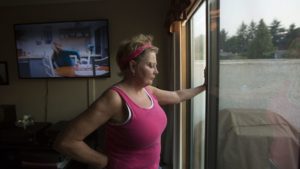To make your voice heard, please contact the Oregon Health Authority at (503) 947-2340 or by email at OHA.DirectorsOffice@state.or.us
Americans were outraged by the Tuskegee syphilis study on black men. It subjected a segment of society to considerable health risk. Today it’s justifiably and uniformly condemned.
There’s no way our government would now exclude vital health care and treatment to vulnerable citizens in America. Right?
Wrong.
In 1932 the Public Health Service began a study regarding the treatment of syphilis using black men as their subjects. Without their informed consent, nearly 400 men with syphilis were not actually being treated for their illness. The program continued until 1972 when an Associated Press article blew the whistle on the “Tuskegee Study of Untreated Syphilis in the Negro Male.” The resultant public outcry ultimately ended this travesty a year later.

An echo of history is unfolding in Oregon. The Oregon Health Authority (OHA) is proposing that all of the state’s Medicaid patients now receiving opioid pain medicine be forced to taper their drugs to zero within a twelve-month period. No exceptions. Not even for those who show no sign of addiction or abuse. It could go into effect as early as October.
This state health bureaucracy says less fortunate patients can instead rely on things like chiropractic care, acupuncture or deep tissue massage. Adding to suspicion are three acupuncturists and a chiropractor serving on the committee.
The proposal has generated significant protest, mainly by patients dependent upon these medicines necessary to maintain a tolerable quality of life. The controversial move also has critics in medicine. The forced taper, says Dr. Stefan Kertesz, a pain and addiction specialist, lacks scientific proof that it’s better for patients.
This would be absolutely devastating for patients. Allow me to share my own personal experience. Chronic spine pain had driven me to the point of hopelessness and desperation by the time I found a competent and empathetic pain specialist. My breakthrough came with the prescription of adequate pain medications. Over time, supplementing them with deep tissue massage and acupuncture (not covered by insurance), enabled the elimination of the heavy-duty pain meds but required an ongoing prescription of a lower-level medicine to make things tolerable. But the reality is most patients don’t benefit from these alternative methods of health care.
In Oregon the stakes are high, and the victimization will likely be widespread, impacting scores of its citizens. The math is simple. Currently, the state has nearly one million patients enrolled in Medicaid. Approximately 10 percent of adults struggle with chronic pain.
It could get much worse. Backers of this proposal hope that it might be a model for the entire state, including private insurers. And if implemented, it may be adopted by other states.
Not to worry says an OHA spokesperson. People with legitimate needs for the meds could “request” an exception. The thought of being at the mercy of a state government bureaucrat sends a chill up my chronically painful spine!

Is it a coincidence that Oregon’s state budget has a billion-dollar shortfall and that it has legalized assisted suicide? The state would reap considerable savings if it were to direct patients away from critical, dollar-consuming health care and into ending their lives. Dead people don’t accrue high medical expenses.
Besides driving less-fortunate patients to end their lives, hopelessness and desperation may force them to dangerous black-market drugs. Laura Dolph’s drug addiction began when she was denied meds for her chronic pain medicine after a car accident. She twice attempted suicide. Laura’s daughter said her problems stemmed from a lack of access to legitimately-needed pain medication.
The comparison between the Tuskegee travesty and the Oregon experiment is appropriate.
- Both target society’s more vulnerable citizens.
- Both demonstrate a lack of respect for human life.
- Both are callous to its repercussions.
For LIFE,
Leave a Reply